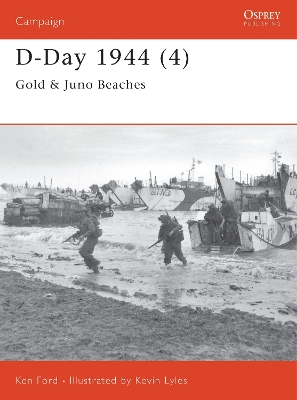Osprey Campaign S.
3 primary works
Book 92
Book 112
Book 127
The Dieppe raid of August 1942 is one of the most controversial actions of World War II. Operation Jubilee was a frontal assault on a fortified port landing the latest equipment and armor directly on to the beach. The main force would destroy the port facilities while other smaller landings dealt with anti-aircraft and coastal batteries. The raid itself turned into a fiasco. The assault force was pinned down on the beach and three quarters of the 5,000 troops landed were lost. This book analyses the disastrous raid and examines contrasting conclusions drawn by the Allies and the Germans.
There is no doubt that the raid in force on Dieppe in August 1942 was one of the most controversial episodes of the Second World War. The Allied loss of life and numbers of prisoners taken, especially amongst the Canadians, led to much recrimination and not a little heated argument. On the face of it the raid was an unmitigated disaster, with virtually none of the objectives achieved. From its outset the plan was seriously flawed, but the momentum to open at least a symbolic second front to help the struggling Russians overruled more sober analysis. Enemy resistance along the shoreline succeeded in pinning down the invading forces, destroying the best part of them while they were still aboard their landing craft or as they tried to get off the beaches. It is now fashionable to see the raid as a rehearsal for D-Day and some justification for the great loss of life is claimed by the many lessons that were learned from the debacle regarding combined operations. Indeed, the military establishment would have had to been incompetent not to have learned anything from such a foul-up, and these lessons did contribute to the success of the Normandy invasion.


